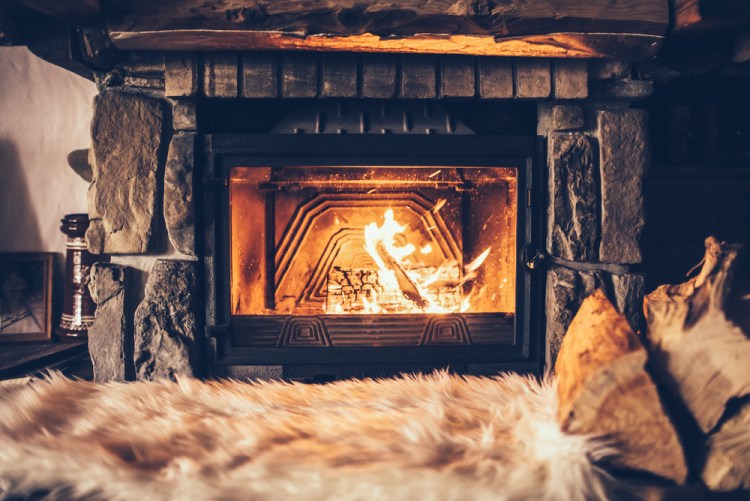Experts recommend that chimneys be cleaned once a year. It may sound like a lot, but after a few seasons of dormancy, various issues could be affecting the chimney, many of which might not be noticeable to an untrained eye.
Professional, certified chimney sweeps have extensive knowledge of fireplaces, making them valuable resources who can let homeowners know if any safety issues developed since fireplaces were last used. The National Protection Agency recommends that chimneys be swept at least once per year.
Certain components of chimney maintenance are do-it-yourself tasks, while others may be better left to the professionals. Rather than running the risk of costly repairs, which can cost several thousand dollars, homeowners can take some simple steps to keep their chimneys in tip-top shape. Warning: these tips include getting on a rooftop. If heights are not for you, or you cannot find a partner to spot, you will want professional help for some of these tasks.
Do It Yourself Tasks
- Start from the inside and ensure that dampers are working properly. When using fireplaces and other appliances, dampers need to be open to allow smoke to vent outside; otherwise, smoke will be trapped in the home and could lead to carbon monoxide buildup. Dampers need to be fixed or replaced if they are not operational. Replacement fireplace dampers should be snug and not have any gaps, states Vertical Chimney Care.
- Conduct a visual inspection of the chimney to check for any cracks or spalling. Spalling is the erosion of masonry due to water, weather, and time. If enough of the material erodes, that erosion can adversely affect the structural integrity of the chimney. Some repairs can be made by patching up cracks or replacing missing bricks. Chimney tuckpointing is the process of repairing mortar.
- Think about waterproofing the chimney to prevent damage. A water sealant applied to the outside of the chimney can prevent moisture from breaking down the masonry.
- Inspect and replace the chimney cap if it is worn out. A chimney cap is a contraption that sits atop the chimney to allow the smoke to vent while also preventing critters and water from going inside the flue, helping to extend the flue life. The chimney cap attaches to the flue liner, so outside dimensions should be taken to ensure the cap is the right size for the chimney.
- Make sure you’re burning the right wood. This Old House recommends using dense wood that’s been split and stored (or “seasoned”) in a high and dry place for at least six months. Oak is an example of dense wood that, when stored properly, can make for an enjoyable fireplace experience. Avoid softwoods like pine. Pine can produce a lot of creosote, which is a byproduct of wood combustion. Creosote is highly flammable, and as it builds up in a chimney, the risk for a chimney fire increases.
Calling The Professionals
The Chimney Safety Institute of America recommends that homeowners who plan to use their chimneys as they have in the past request a Level 1 inspection, which will examine the soundness of the chimney structure and flue as well as the basic appliance installation and connections. It will also determine if there are potentially dangerous levels of creosote deposits in the chimney. Finally, technicians will verify if the chimney is free of obstruction and combustible deposits.
Generally speaking, the chimney liner needs to be cleaned if it has 1⁄8-inch or more of soot.
While you can perform a sweep yourself, if you use your fireplace a lot, hiring a chimney cleaner might be worth the cost of time and energy. Sweeping helps remove the soot, creosot, and debris that clings to the inside of the flue.
Comments are not available on this story.
Send questions/comments to the editors.


